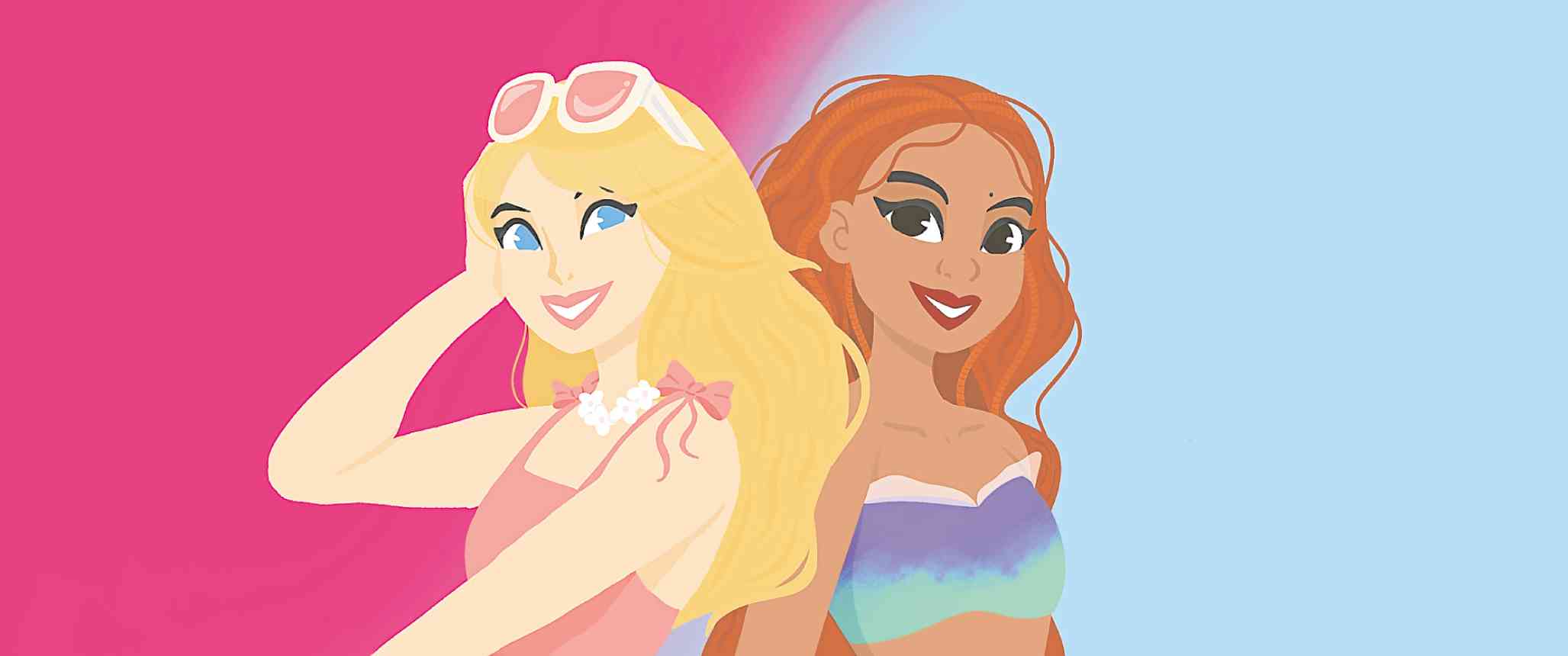
Mean Girls” (2004), “Cinderella Story” (2004) and “High School Musical” (2006) have something in common: The villain is a blonde girl wearing pink.
It is challenging to think of a chick flick or coming-of-age film in which a hyperfeminine character is presented in a positive way. In contrast to the tomboyish and shy protagonist, the pink-clad, glitter-loving and fashion-conscious popular girl is frequently the villain in most of these movies.
Hollywood’s portrayal of overtly feminine characters as bullies, villains and even “dumb blondes” (e.g. Karen Smith in “Mean Girls”) has influenced young girls to develop an aversion towards femininity and a desire to distance themselves from it.
The vilification of femininity and being girly is rooted in misogyny: the problematic but unfortunately still-existing idea that women are inferior to men. Characters like Regina George and Sharpay Evans are used to demonstrate the concept that being a girly girl inherently makes one a spoiled diva that no one can stand. They reinforce the notion that a girl must act like one of the boys in order to win the approval and respect of men, and of society in general.
I am unfortunately a victim of that mindset. I used to be a girly girl when I was younger—never seen wearing jeans, and only wearing dresses and ballerina flats. That is, until it was ruined for me by bullies who said that I “shouldn’t try to dress up because I’ll look ugly either way.” Being boyish made me less of a target for them, and growing up with these films that depict hyperfeminine characters as “evil” didn’t encourage me to embrace my feminine side either. I can only imagine how many other girls are like me, who suppress their femininity, because that’s what movies told them to do.Pink movement
Greta Gerwig’s “Barbie” (2023) has revolutionized the way femininity is depicted in the media. With the rise of the so-called pink movement and Barbiecore, the fashion-loving doll from our childhood has reclaimed hyperfeminism, and promotes the concept that being girly and feminine is not something to be ashamed of. Rather, one’s femininity adds character to their already unique personality.
Take Elle Woods (“Legally Blonde,” 2001) for example. A “Barbie” in her own right, she’s your stereotypical kikay girl whose résumé is printed on hot-pink scented paper. Ultimately, it was her knowledge of after-perm hair care that led her to singlehandedly solve a murder case in court.
Gerwig’s depiction of Barbie is unique in the sense that she didn’t want to have anything to do with her Ken, in contrast to the standard pairing of Barbie and Ken that we saw in the animated films released during the early 2000s. Instead, alongside her portrayal as an unapologetically hyperfeminine character, she is presented to be extremely accomplished in any career that she chooses (astronaut, Nobel Prize winner, president of the United States, you name it, she is it), and wants to forge her own destiny rather than just fit in the mold of being the “Stereotypical Barbie” that everyone expects her to be.
In addition to wearing pink and girly outfits, generally being open about your feelings (i.e. being emotional) and longing for love are stereotypically considered to be feminine traits and in films, female characters who prefer to remain single and unmarried are usually depicted as strong and independent, whereas those who long to have a significant other are often portrayed as unable to stand on their own.
Rewriting the narrative
Disney has been rewriting the narrative of the old, animated versions of Disney Princesses to be more “feminist.” Ariel (“The Little Mermaid,” 1989), who was widely criticized for “changing everything about herself for a man,” was reimagined in the live-action movie. In the live-action “The Little Mermaid” (2023), Ariel’s main motivation to explore the human world was no longer to just be with her prince, but rather, she wanted to expand her horizons and explore what lies beyond her comfort zone.
Yes, she still wants to be with Prince Eric, but the live-action adaptation shows the audience that her love life is not all there is to her.
Ariel being true to herself and being genuine about her emotions adds complexity to her character and emphasizes her motivations for breaking out of the mold that she was expected to conform to.
Rachel Zegler, who is set to play Snow White in the upcoming live-action adaptation of the 1937 animated film, faced backlash online for saying that her character will “not be dreaming about true love.”
Online users took issue on Zegler’s comments, saying that Snow White longing for true love does not make her weak or any inferior in any sense, proceeding to quote Emma Watson’s famous line in Gerwig’s “Little Women” (2019), wherein the protagonist, Jo March (Saoirse Ronan), wants to remain single and concentrate on her career, whereas her sister, Meg (Watson), wants to get married and start a family. In the film, Meg emphasizes that she is not less valuable than Jo, saying, “Just because my dreams are different from yours doesn’t mean they’re unimportant.”
Embracing femininity
Watching the live-action adaptation of “The Little Mermaid” awakened the inner child in me who was obsessed with Disney Princesses. Having kept up with my tomboyish persona for years, I suddenly felt like I can be that princess-loving little girl that I once was—someone who was in awe of the idea of true love and fairy tales. Watching “Barbie” a month after made feel like I was given permission to embrace my femininity again, to wear girlier outfits and jewelry, to play around with makeup, and ditch my all-black-and-blue wardrobe for something more vibrant—like hot pink.
Don’t get me wrong, being tomboyish is NOT bad. Still, we should not be afraid to embrace our feminine side, just because movies have perpetuated negative stereotypes toward hyper feminism.
Yes, I am tomboyish. Yes, I am a huge fan of superhero movies and comic books, but that doesn’t mean that I’m not allowed to also wear pink dresses and enjoy chick-flick movies as well. It also doesn’t mean that I can’t dream of having a significant other or finding true love one day. I don’t have to choose between being boyish or being feminine. I don’t have to conform to just one or the other. I can be both.
Women are multifaceted, and each person is made up of thousands of pieces of media, literature, life experiences, etc. that contribute to the whole image of who they are.
We should not let ourselves be contained or be limited on what we can be, or what we want to be. As Barbie herself puts it, “We girls can be anything.”
People can choose to present themselves to be more feminine or boyish—we should not degrade, nor villainize one or the other. We should stop pitting girls who choose to wear short skirts against girls who choose to wear t-shirts, or those who choose to be cheer captains against those who would rather remain in the bleachers (sorry, Taylor Swift, I still love you though!).
Being a woman in a society ruled by predominantly patriarchal beliefs is hard enough in itself. Instead of patronizing the stereotypical depiction of cliques and mean girls, we should instead empower one another and celebrate what makes each of us unique as a woman. In the end, we only have each other to lift the advocacy of womanhood and feminism.









































